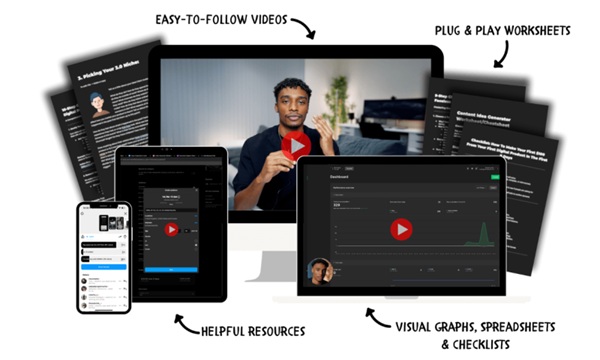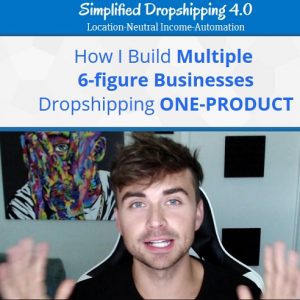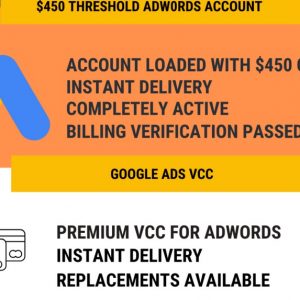No products in the cart.
Digital Income Blueprint – Montell Gordon
$397.00 $29.00
- Payment method: I will send the payment link to your email.
- Deliver by: Google Drive, Mega.nz
Category: Marketing
This article dives deep into a promising Digital Income Blueprint, exploring its core tenets, potential benefits, and critical considerations for anyone seeking to establish a profitable online business. We’ll dissect the claims of rapid income generation and assess the viability of a Faceless approach to digital product sales.
Table of Contents
Digital Income Blueprint
The allure of generating income online, particularly passive income, has captivated millions. The Digital Income Blueprint, as presented, offers a compelling narrative: a path to financial freedom attainable even without pre-existing skills, a built-in audience, or significant financial investment. It’s a siren song for the 9-to-5 crowd, promising escape from the daily grind through the power of digital products and automated systems. But how much of this blueprint is wishful thinking, and how much is grounded in practical reality? Let’s begin.
The Foundation: Digital Products and the Allure of Passive Income
The cornerstone of this Digital Income Blueprint is the concept of digital products. Unlike physical goods, digital products boast near-infinite scalability and minimal marginal cost. Once created, they can be sold repeatedly without incurring additional production expenses. This inherent leverage is what fuels the promise of passive income – the ability to generate revenue even while you sleep. This is further attractive when compared to service based models.
The source materials contrast this model with the struggles of traditional business models like agencies or coaching. Agencies often require constant client acquisition, project management, and the inherent stress of meeting client demands. Coaching, while potentially lucrative, is inherently time-intensive, relying on direct one-on-one interactions. The Digital Income Blueprint positions digital products as a superior alternative, offering freedom from these constraints. Highlighting the frustrations of agency work the guide states, Constantly chasing clients with outreach & then having to get on sales calls via zoom and the time-consuming nature of 1-on-1 coaching. Now those frustrations can be a thing of the past.
However, the potential for passive income doesn’t automatically translate to guaranteed riches. It requires careful planning, strategic execution, and a deep understanding of the target market and it’s needs. The success of Digital Income Blueprint hinges on the ability to create and market digital products that genuinely solve a problem or fulfill a need for a specific audience. Without a valuable product, even the most sophisticated marketing strategies will fall flat.
The “Faceless” Advantage: Marketing Without a Personal Brand
One of the most intriguing and potentially controversial aspects of this Digital Income Blueprint is the “Faceless” approach. In a world that increasingly emphasizes personal branding and influencer marketing, the idea of building a successful online business without putting a face to the name seems almost counterintuitive.
The core argument is that by focusing on targeted advertising, particularly through faceless Instagram reel ads and simple mock-up image ads, individuals can bypass the time-consuming process of building a social media following and establishing a personal brand. The strategy removes the burden of constantly creating content, engaging with followers, and projecting a specific persona. This can be particularly attractive to those who are camera-shy, lack confidence in their public speaking abilities, or simply prefer to maintain a level of anonymity.
However, the reliance on faceless marketing also presents its own set of challenges. Building trust with potential customers becomes more difficult without a personal connection. Overcoming skepticism and convincing prospects that the product is legitimate and worth their investment requires creative and persuasive marketing tactics. You do 100% can still build trust with a faceless digital product and $5/day ads, the material states. It is often crucial to use compelling testimonials, case studies, and other forms of social proof to demonstrate the value and effectiveness of the product.
The $5/Day Ad Strategy: A Realistic Expectation?
The promise of generating significant revenue with a mere $5/day advertising budget is perhaps the most audacious claim of this Digital Income Blueprint. While targeted advertising can undoubtedly be effective, expecting substantial returns on such a small investment requires a highly optimized campaign and a deep understanding of the advertising platform’s algorithms.
It’s crucial to recognize that advertising costs can vary significantly depending on factors such as the target audience, the competition, and the quality of the ad creative. A $5/day budget might be sufficient for initial testing and gathering data, but scaling the campaign to generate a $5,000/month income likely requires a significantly larger investment.
Moreover, the effectiveness of targeted advertising hinges on the ability to identify and reach the right audience. This requires careful market research and the creation of highly targeted ad campaigns that resonate with the specific needs and pain points of potential customers. We skip right past having to build an audience, which takes months, if not years and get your first sales in 1-3 days of going live. While possible, this requires extreme agility. Even the best ad campaign will fail if it’s not reaching the right people.
Speed and Efficiency: Can You Really Create a Product in a Weekend?
The claim that digital products can be created in a weekend is another element of the Digital Income Blueprint that warrants careful scrutiny. While it’s certainly possible to create a basic digital product, such as an e-book or a short video course, in a short amount of time, developing a high-quality, valuable product that truly meets the needs of the target audience typically requires more time and effort.
The emphasis on speed and efficiency suggests a focus on practicality and actionable steps for quick implementation. This can be beneficial for those who are eager to get started and avoid procrastination. However, it’s crucial to strike a balance between speed and quality. Rushing the product development process can lead to a substandard product that fails to deliver on its promises, ultimately damaging the business’s reputation and hindering its long-term success.
The source material explicitly states it Takes 1 weekend! or In Less Than 48 Hours. This suggests a simplified path, however it is important to consider whether or not the rush is worth the result.
Montell Gordon
The narrative surrounding the Digital Income Blueprint often includes the personal success story of Montell Gordon, who is often cited as an example of the blueprint’s effectiveness. The claim that Montell Gordon made $1.2 million in 3.5 years and generated $530,000 from a single digital product serves as a powerful testament to the potential of this approach. However, it’s crucial to examine these claims with a healthy dose of skepticism and consider the factors that may have contributed to Montell Gordon‘s success.
Examining the Authenticity and Replicability of Success
While personal success stories can be inspiring, it’s important to remember that they are not always indicative of the potential for others. Montell Gordon‘s success may be attributable to a unique set of circumstances, skills, and experiences that are not readily replicable.
Moreover, it’s crucial to verify the accuracy of the financial figures cited in the narrative. While there’s no inherent reason to doubt the claims, it’s always prudent to seek independent verification or corroborating evidence. The fact that he claims to have made $1. 2m in 3 & half years and specifically highlights the success of their first no face digital product, which generated $530,000 from just that single stupidly simple idea alone, is attention catching.
Furthermore, it’s important to consider whether Montell Gordon‘s success is sustainable in the long term. The online business landscape is constantly evolving, and what works today may not work tomorrow. Adaptability and a willingness to continuously innovate are essential for long-term success. Consider his recent daily earnings, such as $20,713 ($25,500) before 9 am. . . in just 5 days and a $32,000 day. Does that account for ad spend, taxes, and other potential expenses?
Identifying and Solving a Real Problem
The source materials emphasize the importance of solving a real problem as a key driver of success. Montell Gordon‘s first digital product, which taught users how to use Upwork to land their first 1-5 clients, is cited as an example of how addressing a specific market need can lead to significant revenue.
This underscores the importance of conducting thorough market research and identifying the pain points and frustrations of potential customers. A successful digital product is one that provides a tangible solution to a real-world problem, offering value and improving the lives of its users.
However, identifying a problem is only half the battle. The product must also be of high quality and effectively address the identified need. A poorly designed or ineffective product will likely fail to generate significant sales, regardless of the size of the market or the effectiveness of the marketing campaign. Having to solve the problem is the most important component of a Digital Income Blueprint.
Understanding the High-Profit Margin Claims
The Digital Income Blueprint frequently emphasizes the high-profit margins associated with digital products, often citing figures around 96% after transaction fees. While it’s true that digital products have the potential for extremely high-profit margins due to low production and distribution costs, it’s important to factor in all relevant expenses.
Advertising costs, marketing expenses, customer support, and software subscriptions can all significantly impact the profit margin. While the cost to produce or distribute might be low, your marketing spend can change the math quickly. It’s crucial to accurately track all expenses and calculate the true profit margin to get a realistic picture of the business’s financial performance.
Moreover, it’s worth noting that high-profit margins are not always indicative of overall profitability. A product with a high-profit margin that doesn’t sell many copies may generate less revenue than a product with a lower profit margin that enjoys high sales volume. High-profit margins are possible, as the material highlights: My profit margins were over 96% and there was no damn client work! All of this comes from selling simple digital products with insanely high-profit margins.
Building Trust in a Faceless World
As we mentioned before, maintaining a Faceless approach can raise doubts for potential clients. Building trust becomes more critical than ever. Remember some of the ways to build trust:
- Compelling Testimonials: Showcase positive feedback from satisfied customers
- Case Studies: Present detailed examples of how your product has helped others achieve results
- Social Proof: Highlight the number of users or sales to demonstrate popularity and credibility
Each of these can give your brand and legitimacy even in the faceless context.
Conclusion
The Digital Income Blueprint offers a compelling vision of entrepreneurial freedom, promising a pathway to generating a $5,000+/month income within six months without requiring specialized skills, a pre-existing audience, or significant upfront investment. This is achieved through a Faceless strategy centered on targeted advertising and automated systems that facilitate passive income. While the emphasis on speed, efficiency, and high-profit margins is undeniably attractive, it is crucial to critically evaluate the achievability of these claims, the replicability of success stories like Montell Gordon, and the potential challenges associated with building trust in a faceless digital business model.
Sales Page:_https://www.montellgordon.com/
Be the first to review “Digital Income Blueprint – Montell Gordon” Cancel reply
Related products
Sale!
$49.00
$19.00
$25.00












Reviews
There are no reviews yet.